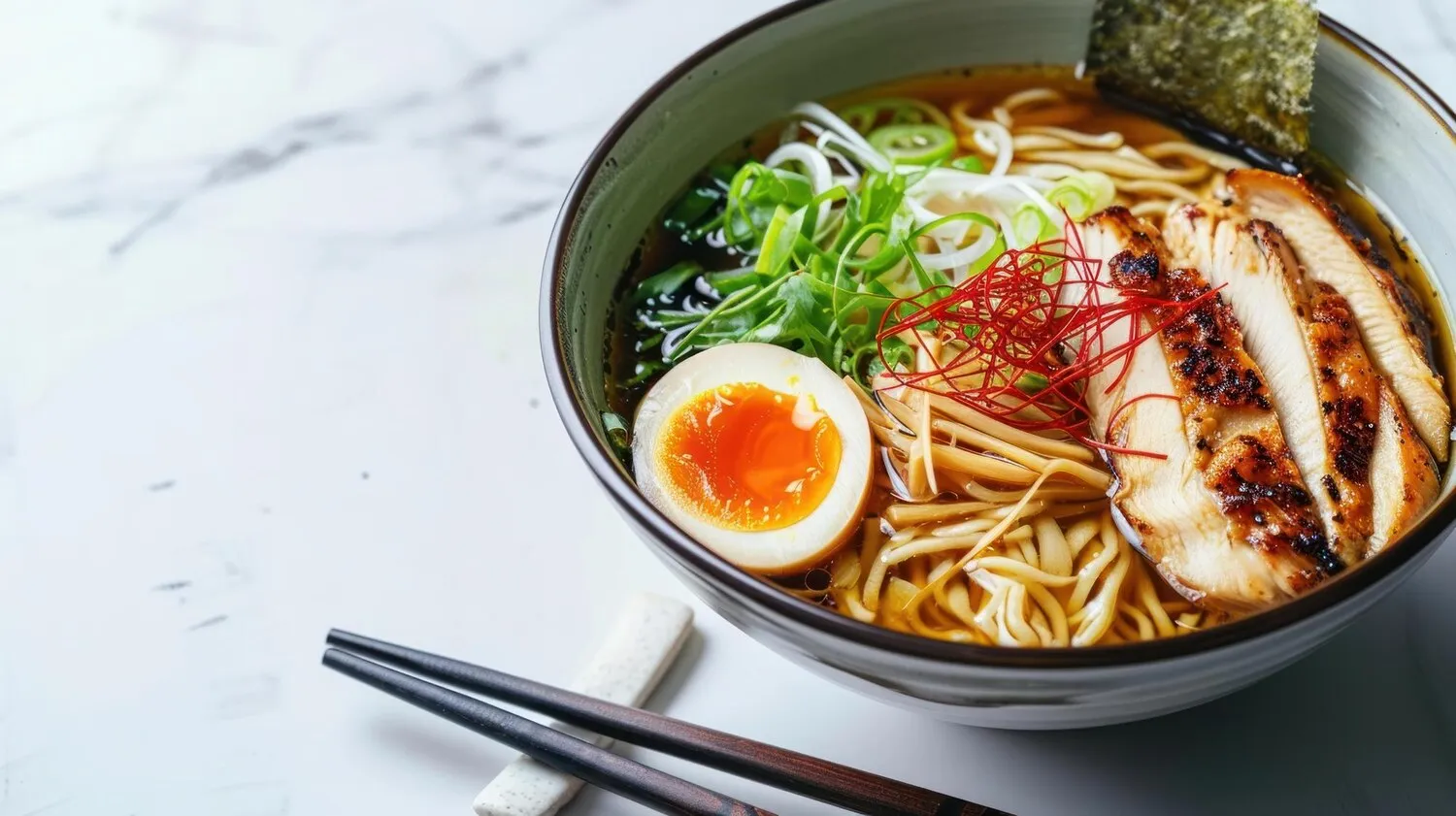
Ramen
Woosabi serves ramen.
Nutrition Facts
* The % Daily Value (DV) tells you how much a nutrient in a serving of food contributes to a daily diet. 2,000 calories a day is used for general nutrition advice.
Ramen's origins can be traced back to Chinese wheat noodles. It was introduced to Japan in the late 19th or early 20th century, becoming a popular street food. Over time, regional variations and unique Japanese ingredients transformed it into the dish we know today.
Ramen is deeply ingrained in Japanese food culture, representing comfort food, culinary artistry, and regional identity. Ramen shops are ubiquitous throughout Japan, each offering its unique take on the classic dish.
Ramen Shops as Social Hubs
Ramen shops are often small, bustling spaces where people from all walks of life gather to enjoy a quick and affordable meal. The communal atmosphere fosters a sense of connection.
Regional Variations
Each region of Japan boasts its own distinct ramen style, reflecting local ingredients and culinary traditions. Examples include Hakata ramen (tonkotsu broth), Sapporo ramen (miso broth), and Tokyo ramen (soy sauce broth).
Ramen as Art
Many ramen chefs are highly skilled artisans who meticulously craft their broths, noodles, and toppings. They often experiment with new flavors and techniques, pushing the boundaries of ramen cuisine.
Ramen is characterized by its rich, savory broth, al dente noodles, and diverse toppings. The interplay of umami, saltiness, and texture defines the flavor profile.
The broth is the soul of ramen, typically made from pork, chicken, fish, or vegetables, simmered for hours to extract maximum flavor. Common flavor enhancers include soy sauce, miso, salt, and various aromatic oils. Noodles are made from wheat flour, water, salt, and kansui (alkaline mineral water), giving them a distinct chewiness and yellow color. Toppings vary widely but often include chashu (braised pork belly), menma (fermented bamboo shoots), scallions, nori (dried seaweed), soft-boiled eggs, and narutomaki (fish cake).
Slurping is Encouraged
Slurping noodles is not considered rude in Japan; it is believed to enhance the flavor and enjoyment of the ramen.
Try Different Toppings
Experiment with various toppings to customize your ramen and discover new flavor combinations. Some popular options include chili oil, sesame seeds, and pickled ginger.
Respect the Broth
The broth is a crucial element of ramen. Take your time to savor its flavor and appreciate the chef's efforts.
Explore additional Ramen dishes and restaurants
Explore RamenDiscover top dining spots and culinary experiences in Innsbruck.
Explore InnsbruckLearn more about the food culture, restaurant scene, and culinary heritage of Austria.
Explore Austria